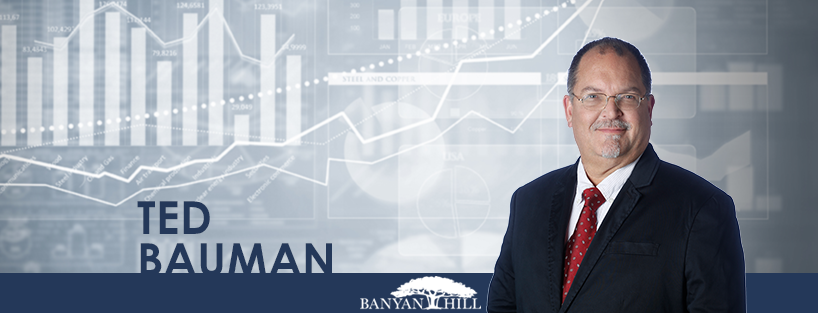Ted Bauman’s latest advice to his readers is about 401(k) plans. In his Banyan Hill Publishing newsletter, Bauman said that he did not like those plans. Although they are meant to give Americans assurance of adequate retirement savings, more than 30 percent of citizens in this country do not have anything saved for retirement. Also, another 25 percent of Americans have less than $10,000 saved. Although the structure of a 401(k) plan is designed to make people want to save more, research shows that most people who contribute to a retirement fund would do so without a 401(k). Any tax breaks that boost savings are wasted.
With his strong financial background, Ted Bauman is a good source of information for investments that relate to retirement savings. Ted Bauman joined Banyan Hill’s editorial staff in 2013. He is the author of three newsletters, which are Plan B Club, The Bauman Letter and Alpha Stock Alert. Ted spent a considerable portion of his youth living and studying in South Africa. He earned degrees in economics and history. After he graduated, Ted worked with multiple nonprofit organizations and was a fund manager for low-cost housing projects. He strives to inspire Americans to make smart investing choices to help them live fuller lives that are not restrained by corporate or government greed.

Traditional Pension or Cash-Balance Plan? Ted Bauman Explains.
401(k) Plans And Company Pensions
In 1980, 401(k) plans were developed by accident. A benefits consultant noticed a provision in the Revenue Act of 1978 that allowed employees to contribute money to a retirement fund without taxes. Also, it allowed employers to match contributions. One year later, the Internal Revenue Service gave its approval for 401(k) plans. As Ted said in his letter, the spread of these plans was not an accident. They sounded enticing to employees at the time but were not optimal for them. However, they saved employers a lot of money, which was why they promoted them so much. By 1983, about 50 percent of the major employers in the United States offered 401(k) plans.
Today, 401(k) plans are still heavily promoted by employers. They come with many investment management fees. Ted said that 401(k) plans alleviate retirement-related risks and burdens from employers but put them on workers instead. Ted encourages Americans to use a different method of saving for retirement. Pension plans are also options for some Americans. However, they are not ideal either, and many companies no longer offer pension plans to their long-term employees. One of the benefits of these plans is that employees know exactly how much their monthly income will be when they retire. In contrast, a 401(k) plan’s only defined amount is the contribution or matching amount.
When company pensions were at the height of their popularity, they were supposed to be secure. However, they were extremely risky. The burden of managing the pension plan belonged to the company, and it had a responsibility to ensure that there was enough money to pay retirees. As time passed, government regulations altered the system so much that companies could simply stop paying retirees if the business encountered financial problems. If someone worked for a company for 40 years and paid into the retirement fund, that person’s income simply stopped. The system hurt soon-to-be retirees badly, and many of them did not have other significant streams of income.
When 401(k) plans emerged, company pensions lost even more popularity. Most employers did not want the responsibility of paying retirees and deciding how much to give them. With a 401(k), a worker had to decide how much to contribute to his or her own account. A person’s future security was attached to contribution amounts and to the condition of the stock market.
Cash-Balance Plans Are a Good Alternative to a 401(K)https://t.co/xe5Xf4pWPr#CashBalancePlans #401k #NASDAQ #SP500 #NYSE #Assets #Retirement #Commodity #Money #Investing #Commodities #Resources #Economy #Politics #Trading #Stocks #StockMarket #CMT #BanyanHill pic.twitter.com/KA0hBZi9jD
— Ted Bauman Guru (@TedBaumanGuru) August 27, 2018
A Better Retirement Plan Solution
Ted Bauman went on to explain cash balance plans in his letter. He said that these plans are often overlooked by people even though they include the best features from both traditional pension plans and 401(k) plans. With a standard pension plan, an employer makes the contribution. Participants receive a specific amount when they retire, and funds are managed by professionals. With a cash balance plan, the promised benefit is presented as an account balance for each participant instead of as a guaranteed monthly income. In this sense, it is similar to a 401(k) plan.
A participant’s retirement benefits depend on the market’s performance and the fund manager’s abilities with a 401(k) plan, and the employee takes on 100 percent of the risk. With a cash balance plan, employees have the guarantee of a specific benefit amount when they retire. In this way, it is also similar to a standard pension plan. The employer takes on market fluctuation risks. Since cash balance plans come with defined benefits and some uncertainties for employers, they must be insured to offset those risks. An insurance payment is an investment in the idea that an employee knows what his or her retirement income will be someday. When the participant cashes in the retirement benefit, he or she can accept it as a lump sum or as an annuity.
Although this hybrid plan may sound beneficial only for employees, it is actually beneficial for employers as well. When employees get their payouts, they are no longer the responsibility of the company. Although an employer would pay a monthly income amount with a traditional pension plan, the employer would simply pay a defined lump sum with a cash balance plan. These plans are growing in popularity. According to Ted Bauman, the cumulative amount of money that is deposited into these types of accounts is growing by two-digit percentages each year in the United States.
Since cash balance plans are simple to use and do not have complicated terms, it is easy to see why they are becoming more common. Employers know that they must offer ideal benefits if they want to attract and retain top talent. However, they must also protect their bottom line and their future survival when it comes to choosing which benefits to offer to employees. This option is more advantageous to workers than a 401(k), and it still protects employers. The employer deposits up to eight percent of a worker’s salary into a cash balance plan. When each new year starts, the employee’s plan balance increases at a fixed rate or at a variable rate. If a variable rate is used, it is connected to a benchmark.
When the final payout is calculated, it is determined by the worker’s number of years of service. Additionally, the participant’s salary is a considered factor. If employees get raises, their cash balance plans grow as well because of the deposit structure. Another benefit is a hidden tax advantage. According to current IRS rules, $56,000 is the annual limit that can be deposited into an IRA or a 401(k) collaboratively by an employer and an employee. The contribution limit for a cash balance plan is much higher, and the limit increases with age. For example, someone who is 50 years of age or older has a limit of $200,000 for combined pretax contributions. That person can still contribute to an IRA or a 401(k) as well.
Ted Bauman encouraged his readers to look into cash balance plans with their HR representatives. If a company does not offer this type of plan, workers can request it or can request that employers learn more about it. However, self-employed people and small business owners can make their own decisions about cash balance plans. People who want to learn more about Ted Bauman and his investing tips can read about him on Banyan Hill’s site and can subscribe to one of his paid newsletters.
Related: https://www.forbes.com/sites/kenrapoza/2018/06/26/heres-how-the-bull-market-dies/#5de3c2d3434f
Dil Bole Oberoi





